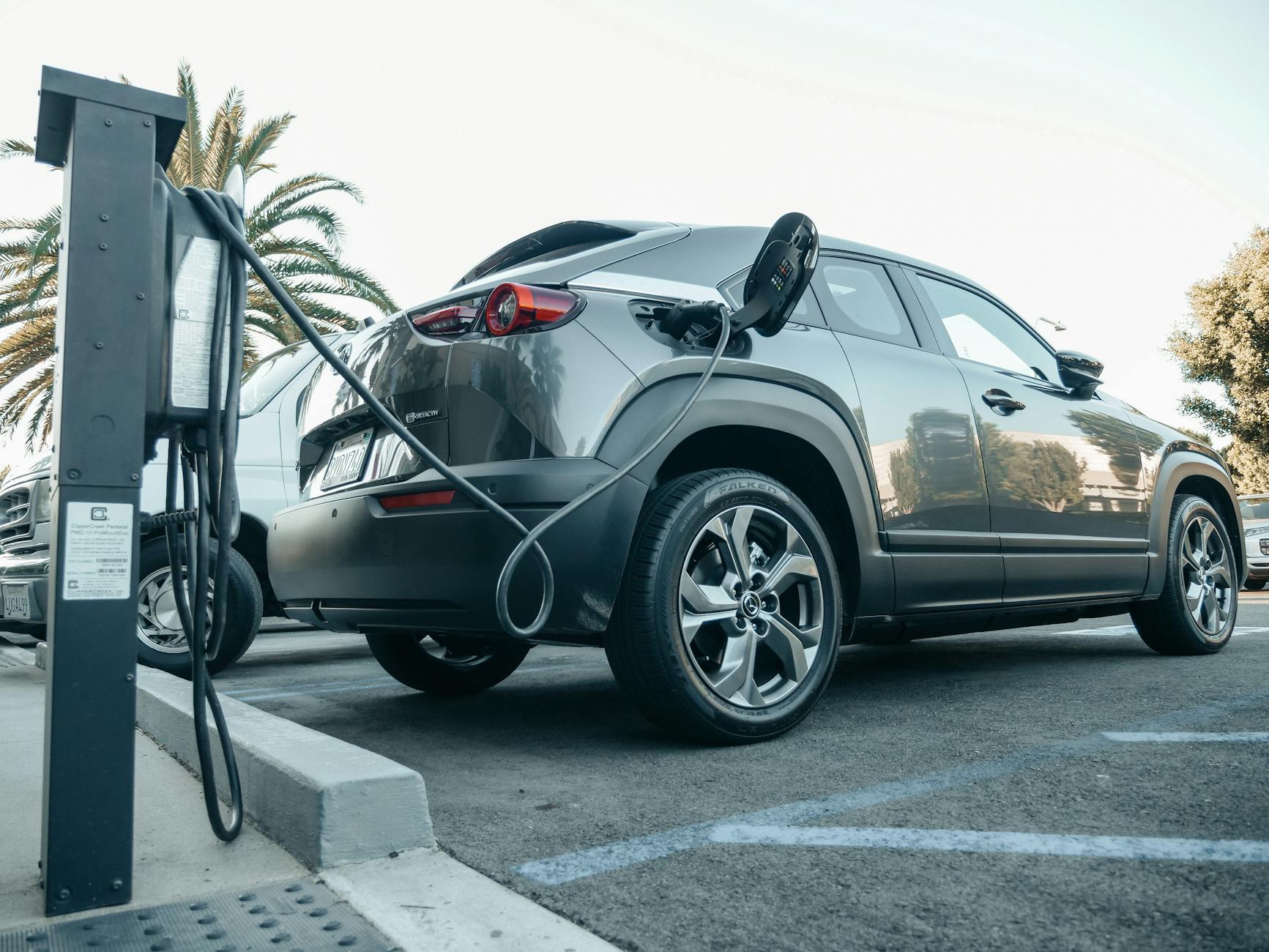Table of Contents
Introduction: Electric Vs Hybrid vs Petrol Cars UK
The UK car market is at a crossroads. With the government pushing for net-zero emissions by 2050 and the ban on new petrol and diesel car sales looming in 2035, drivers face a big decision: stick with traditional petrol or diesel cars, switch to electric vehicles (EVs), or opt for the middle ground of hybrid cars? Each option has its own appeal, but choosing the right one depends on your lifestyle, budget, and priorities.
In this detailed guide, we’ll break down the pros and cons of electric, hybrid, and petrol/diesel cars in the UK context. We’ll explore running costs, environmental impact, performance, and the taxes and levies you’ll encounter as of 2025. By the end, you’ll have a clear picture of what to consider when deciding which car to buy. Let’s dive in!
What Are Electric, Hybrid, and Petrol/Diesel Cars?
Before comparing, let’s define the contenders:
- Electric Vehicles (EVs): These run entirely on electricity stored in rechargeable batteries, powering electric motors. Examples include the Tesla Model 3, Nissan Leaf, and MG4 EV. They produce zero tailpipe emissions.
- Hybrid Vehicles: These combine a petrol or diesel engine with an electric motor. Hybrids come in two main types:
- Self-Charging Hybrids (HEVs): Like the Toyota Prius, these recharge their batteries using the engine and regenerative braking.
- Plug-in Hybrids (PHEVs): Like the Mitsubishi Outlander PHEV, these have larger batteries you can charge externally, offering more electric-only range.
- Petrol/Diesel Cars (ICE Vehicles): Traditional internal combustion engine (ICE) vehicles run solely on fossil fuels. Think Ford Fiesta (petrol) or Volkswagen Passat (diesel).
Each type suits different needs, so let’s explore how they stack up.
Electric Vehicles (EVs): Pros and Cons
EVs are the poster child of the UK’s green revolution, but they’re not perfect. Here’s what you need to know.
Pros of Electric Cars
- Eco-Friendly: EVs produce zero tailpipe emissions, making them the greenest option for reducing air pollution. With the UK’s grid increasingly powered by renewables, their lifecycle emissions are dropping—potentially 70-90% lower than ICE cars when charged with clean energy.
- Low Running Costs: Electricity is cheaper than fuel. Charging a typical EV like the Nissan Leaf (40 kWh battery) at home costs around £12 for a full charge at average rates (30p/kWh). Compare that to £80+ to fill a 55-litre petrol tank in 2025.
- Tax Incentives (For Now): As of February 2025, EVs are still exempt from Vehicle Excise Duty (VED), though this ends in April 2025. Company car drivers enjoy a low 2% Benefit-in-Kind (BIK) tax rate, rising gradually to 5% by 2028—still far below petrol/diesel rates.
- Minimal Maintenance: No oil changes, fewer moving parts, and regenerative braking reduce wear on brake pads. EVs can save you hundreds annually on servicing.
- Perks in Cities: EVs dodge the London Congestion Charge (£15/day) and Ultra Low Emission Zone (ULEZ) fees (£12.50/day), plus similar levies in Clean Air Zones (CAZs) like Bath and Birmingham.
Cons of Electric Cars
- High Upfront Cost: EVs remain pricier than equivalents. A new MG4 EV starts at £26,000, while a petrol Ford Puma costs £22,000. Used EVs are catching up, but supply is limited.
- Range Anxiety: Average EV range is 200-300 miles, but cold weather or fast driving cuts this. The Tesla Model 3 Long Range (374 miles) is an exception, but it’s £50,000+.
- Charging Infrastructure: The UK has over 50,000 public chargers as of 2025, but rural areas lag. Home charging requires off-street parking and a £350 charger install (subsidised for renters/flats via grants).
- Charging Time: A full charge takes 8-12 hours on a standard 7 kW home charger. Fast chargers (50-150 kW) take 30-60 minutes, but they’re less common and costlier (e.g., 43p/kWh).
- Battery Degradation: Over years, batteries lose capacity, though most come with 8-10 year warranties.
Hybrid Vehicles: Pros and Cons
Hybrids bridge the gap between ICE and EVs, offering flexibility. Here’s the breakdown.
Pros of Hybrid Cars
- Fuel Efficiency: HEVs like the Toyota Corolla achieve 60+ mpg, thanks to electric assistance in stop-start traffic. PHEVs like the BMW 330e offer 30-50 miles of electric-only range, slashing fuel use for short trips.
- No Range Anxiety: With a petrol/diesel engine as backup, hybrids suit long drives. Refuel at any station—no charger hunting required.
- Lower Emissions: Hybrids emit less CO2 than ICE cars. PHEVs can be near-zero emission for daily commutes if plugged in, aligning with UK clean air goals.
- Tax Benefits: PHEVs with CO2 emissions under 50g/km qualify for lower VED rates (£10 first year) and a 2% BIK rate until April 2025. HEVs get a £10 annual VED discount vs. petrol/diesel.
- Smooth Transition: Familiar driving feel with petrol/diesel refuelling, plus electric boosts for efficiency and quietness.
Cons of Hybrid Cars
- Higher Purchase Price: Hybrids cost more than ICE equivalents. A Toyota Corolla Hybrid is £30,000 vs. £25,000 for its petrol sibling.
- Limited Electric Range: HEVs offer 1-2 miles electric-only; PHEVs max out at 50 miles—fine for commuting, but not long trips.
- Maintenance Complexity: Two powertrains mean potential repairs for both electric and ICE components. Battery replacement (post-warranty) could hit £2,000.
- Less Green Than EVs: Hybrids still burn fossil fuels, producing tailpipe emissions—less than ICE, but more than EVs.
- End of the Road: New hybrid sales will stop in 2035 under current UK plans, potentially affecting resale values.
Petrol and Diesel Cars (ICE): Pros and Cons
Fuel-powered cars remain the UK’s most common choice, but their dominance is fading. Here’s why.
Pros of Petrol/Diesel Cars
- Affordable Upfront: A petrol Ford Fiesta costs £19,000 new, undercutting EVs and hybrids. Used options are plentiful and cheap.
- Long Range: A 55-litre tank offers 400-600 miles—great for motorway warriors or rural drivers. Diesels like the VW Passat hit 700+ miles.
- Fast Refuelling: Five minutes at a pump beats hours charging an EV. Fuel stations are everywhere.
- Proven Technology: ICE cars are reliable, with decades of refinement. Repairs are straightforward and parts abundant.
- Performance Options: Petrol/diesel cars offer raw power—think BMW M3 (510 hp)—that EVs struggle to match at lower price points.
Cons of Petrol/Diesel Cars
- High Running Costs: Fuel prices hover at £1.50/litre in 2025, so a 55-litre tank costs £82.50. Annual costs for 7,500 miles exceed £1,000—double an EV’s electricity bill.
- Environmental Impact: ICE cars emit 120-200g/km of CO2, plus pollutants like nitrogen oxides (NOx). They’re a key target for UK net-zero policies.
- Tax Penalties: VED is emissions-based—£180/year standard rate, plus £410/year for cars over £40,000 (years 2-6). Diesel company car BIK rates hit 37%, vs. 2% for EVs.
- City Levies: Non-Euro 6 diesels and pre-Euro 4 petrol cars face CAZ/ULEZ charges (£8-£12.50/day). Even compliant models pay the £15 Congestion Charge.
- Depreciation: With the 2035 ban nearing, ICE resale values are softening, especially for diesels hit by “dirty” stigma.
Taxes and Levies in the UK: What You’ll Pay in 2025
Taxes and levies significantly sway ownership costs. Here’s the latest for February 2025, with changes looming.
Electric Vehicle Taxes and Levies
- VED: Currently £0, but from April 1, 2025, EVs lose their exemption. New EVs pay £10 first year, then £180/year standard rate. Cars over £40,000 add £410/year (years 2-6).
- BIK Tax: 2% for company car drivers until April 2025, rising 1% annually to 5% by 2028—still a bargain vs. ICE rates.
- City Charges: EVs are exempt from ULEZ, CAZs, and Congestion Charge, saving £2,000+ annually for London commuters.
- Fuel Duty: None—electricity isn’t taxed like petrol/diesel (60p/litre).
Hybrid Vehicle Taxes and Levies
- VED:
- HEVs: £170/year (£10 less than ICE), based on emissions (e.g., 100-120g/km).
- PHEVs: £0-£120 first year if under 50g/km, then £170/year. Over £40,000 adds £410/year (years 2-6).
- BIK Tax: PHEVs under 50g/km get 2% until April 2025, then tiered by electric range (e.g., 8-14% for 30-50 miles). HEVs face 20-30% based on CO2.
- City Charges: PHEVs with 20+ miles electric range dodge ULEZ/CAZ fees. HEVs may pay unless emissions are ultra-low.
- Fuel Duty: Applies to petrol/diesel use—60p/litre tax bites on longer trips.
Petrol/Diesel Vehicle Taxes and Levies
- VED: £180/year standard, with first-year rates from £10 (under 50g/km) to £2,745 (over 255g/km). Over £40,000 adds £410/year (years 2-6).
- BIK Tax: 20-37%, based on emissions—diesels sit one band higher than petrol.
- City Charges: Non-compliant models (pre-Euro 4 petrol, pre-Euro 6 diesel) pay ULEZ/CAZ fees (£8-£12.50/day). All ICE cars pay the £15 Congestion Charge.
- Fuel Duty: 60p/litre, plus VAT, makes fuel a tax-heavy expense.
What Should UK Buyers Consider When Choosing?
Your perfect car depends on your circumstances. Here’s a checklist:
1. Driving Habits
- Short Commutes (under 50 miles/day): EVs or PHEVs shine with low running costs and electric-only range. Charge overnight at home.
- Long Distances (100+ miles/day): Petrol/diesel or HEVs win for range and refuelling ease.
- City Driving: EVs dodge levies and thrive in stop-start traffic. PHEVs are a close second.
2. Budget
- Upfront Cost: Petrol/diesel cars are cheapest, followed by HEVs, PHEVs, then EVs.
- Running Costs: EVs lead (electricity + low maintenance), then PHEVs (if plugged in), HEVs, and ICE cars (fuel + servicing).
- Resale Value: EVs hold value better as demand grows; ICE cars, especially diesels, may tank by 2035.
3. Charging/Fuel Access
- Home Charging: EVs and PHEVs need off-street parking or a nearby charger. Grants (£350) help, but renters may struggle.
- Public Charging: EVs rely on a growing but uneven network—check Zap-Map for local options.
- Fuel Stations: ICE and hybrids refuel anywhere, a big plus in rural areas.
4. Environmental Goals
- Greenest Choice: EVs, especially with renewable energy.
- Middle Ground: PHEVs (if charged) and HEVs cut emissions vs. ICE.
- Least Green: Petrol/diesel, facing tighter regulations.
5. Future-Proofing
- Policy Shifts: The 2035 ban looms—EVs align with this; hybrids get a decade; ICE cars face declining support.
- Tech Advances: EV ranges and charging speeds are improving fast—future models may outpace today’s.
Head-to-Head Comparison: Electric vs Hybrid vs Petrol Cars UK
FactorElectric (EV)Hybrid (HEV/PHEV)Petrol/Diesel (ICE)Purchase Price High (£26,000+) Medium-High (£25,000-£35,000) Low (£19,000+) Running Cost Very Low (£500/year) Low-Medium (£700-£900/year) High (£1,000+/year) Range 200-300 miles 400-600 miles (total) 400-700 miles Emissions Zero tailpipe Low-Medium (20-120g/km) High (120-200g/km) Tax (VED) £0 (until April 2025) £0-£170/year £180+/year City Levies Exempt PHEVs exempt; HEVs may pay £8-£15/day (if non-compliant) Maintenance Low Medium High Refuel/Recharge 30 mins-12 hours 5 mins (fuel) + charge (PHEV) 5 mins
Real-World Scenarios: Which Car Fits You?
- Urban Commuter (London, 20 miles/day): An EV like the Nissan Leaf saves on fuel (£300/year) and levies (£3,000+/year avoided). Home charging seals the deal.
- Rural Family (Yorkshire, 100 miles/day): A diesel VW Passat offers range (700 miles) and refuelling ease, though fuel costs £1,500/year.
- Mixed Driver (Birmingham, 50 miles/day): A PHEV like the Kia Niro PHEV balances electric commutes (30-mile range) with petrol for trips, at £800/year running cost.
The Verdict: Which Should You Buy in 2025?
- Choose an EV if: You have home charging, drive mostly in cities, and want the lowest running costs and greenest footprint. The tax shift in April 2025 dents savings, but long-term benefits hold.
- Choose a Hybrid if: You need flexibility—short electric trips and long fuel-powered journeys—without charger reliance. PHEVs suit commuters; HEVs fit rural drivers.
- Choose Petrol/Diesel if: Budget is tight, you cover high mileage, or charging isn’t viable. Diesels suit long hauls; petrol fits lighter use.
The UK’s push toward electrification favours EVs, but hybrids and ICE cars still have a place. Weigh your needs against costs, infrastructure, and future trends. Whatever you pick, 2025 is a pivotal year—choose wisely!





2 thoughts on “Electric vs Hybrid vs Petrol Cars UK: Which Should You Buy in 2025”
Comments are closed.